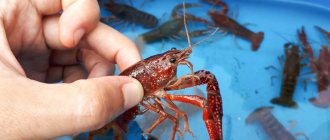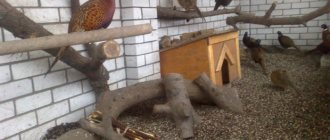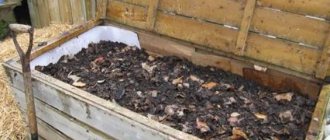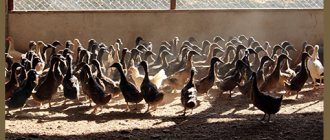Turkey farming is an increasingly popular type of poultry farming. Birds are in great demand for dietary meat, and caring for them is not difficult even for beginners.
This direction is characterized by low costs even at the start stage, since turkey poults are unpretentious in maintenance, grow quickly and gain weight. By the end of the first year, the birds reach 18-25 kg, depending on the breed.
An important condition is the correct organization of your business, since profitability and payback period largely depend on the competent distribution of resources. In this article we will look in detail at whether turkey breeding as a business is profitable or not.
Features of this business
Breeding turkeys for sale is one of the most profitable areas of poultry farming. Today in Russia there is practically no competition, although meat is highly valued on the market. Before starting work, you should consider the specifics of this business:
- Turkeys are gaining weight. Some breeds can weigh up to 30 kg by adulthood;
- meat is in demand at any time of the year, the average return on investment is 18 months;
- fairly low costs for young animals for breeding;
- The first income from the sale can be received in 4-6 months;
- Turkeys are hardier and more resilient birds than chickens. With proper prevention, diseases rarely cause mortality of the entire herd.
In addition to turkey meat, you can also sell
eggs, which can be obtained from one bird up to 200 per year.
It should be borne in mind that turkeys are picky about food, so the cost of feed will be high at first, but due to the rapid weight gain they will more than pay for themselves.
Turkey meat has a pleasant taste, dietary value, and is high in vitamins and microelements. Often used by athletes, as well as pregnant women due to its hypoallergenicity.
How I decided to have turkeys
Hello everybody. My name is Nadezhda, I live in a rural area in the Stavropol Territory. Our area is a little dry in the summer and hot, the air temperature can reach 50 degrees.
A little bit about yourself
I work a standard work week - Monday to Friday, working day - from 8:00 to 17:00.
The work is decent, the salary is high, but, like any person, I want to buy a car, make repairs in the house, update the furniture, and go on vacation in the summer.
And there are other needs - food, clothing, payment of utilities, kindergarten and school, in general, you can list a lot.
It's decided - I'm buying it
From all this, I concluded for myself that I need to look for additional ways to earn money.
I thought the Internet would help me find something suitable, but it was all in vain.
And then a colleague once mentioned that in six months from raising turkeys he received an additional income of 120,000 rubles, and sold everything to neighbors, friends, colleagues and provided himself with meat. This idea haunted me, and in the end, I decided to take a risk.
Things to consider
In most cases, farming business is started by people who are already involved in housekeeping. This is a troublesome and complex matter where it is necessary to take into account the specifics of the activity. When breeding turkeys, you should understand that there are three main problems - the high risk of diseases in young animals, the food supply and the sale of finished products. You also need to carefully plan all the necessary outbuildings and organize the space productively. You should officially register your enterprise.
What documents are needed
In recent years, the Russian Federation has simplified the collection and preparation of documentation for beginning farmers. One of the key points is the ability to raise birds for sale on your own plot of land in compliance with all sanitary and environmental standards. You should obtain the status of an individual entrepreneur and choose a form of taxation. To freely sell meat, the following minimum documents are required:
- certificate of conformity to GOST;
- certificate from the veterinary service (form No. 2);
- declaration of product quality conformity;
- registration of breeding individuals (for the sale of purebred birds).
An example of a certificate from the veterinary service (form No. 2).
Even at the preparation stage, it is recommended to conclude agreements with sales points. These can be both small entrepreneurs and large chain stores.
It is advisable to hire a competent lawyer to help with the preparation of all documentation, thanks to which you will avoid mistakes and subsequent inspections by various government agencies.
Growing technologies
The profitability of breeding poultry depends on the method of keeping. The following approaches are suitable for industrial rearing of turkeys:
- Extensive. Usually used for seasonal bird breeding in the southern regions. Turkey poults are kept in a warm room from the first days of life, and then released onto pasture, where they quickly gain weight. At the end of the season they are slaughtered. This method requires shelter, drinkers and feeders, as well as a spacious walking area of 4 hectares for 1000 birds;
- Floor. Suitable for small farms with a well-equipped poultry house. Turkeys are usually kept in a spacious room divided into several zones. Sawdust or hay is used as bedding. The bird density is 3-5 birds per 1 m2;
- Cellular. Suitable for raising small breeds, as well as young animals for quick fattening. The cages are placed on the floor or racks in a well-ventilated and heated barn. Crowding of birds is similar to the floor method, but using cages you can save space in the poultry house.
To create a profitable business, it is recommended to combine all three methods. For example, the extensive type is suitable for long-term rearing of birds for breeding, the cage type is suitable for quickly obtaining meat, and the floor type of rearing is universal.
Cost and profitability of buildings and equipment
Turkeys are large birds, so they need a spacious room for a comfortable life. You can build a turkey poultry house yourself, or order a ready-made version from a construction company. The area of the premises depends on the volume of livestock. To keep young animals up to 1 month, the density of the flock is up to 15 turkey poults per 1 m2, for 10 two-month-old chicks 1 m2 is required, adult birds are kept at the rate of up to 2-3 individuals per 1 m2. For construction and equipment you will need:
- sand-cement mixture for the foundation;
- wooden beams and slats;
- metal grid;
- roofing material (metal tiles or slate);
- insulation;
- two frames for windows, glass;
- door to the poultry house;
- floor bedding (sawdust or hay);
- fastening material;
- heaters with power from 3 to 6 kW;
- thermometer and hygrometer for microclimate control;
- 2-3 drinking bowls;
- feeders (2 pieces for 50 turkey poults).
In addition, at this stage it is necessary to plan whether an incubator will be required, as well as equipment for mixing and preparing the feed. The cost of building materials varies greatly depending on the region of residence.
On average, in Russia, the construction of a turkey poultry farm with an area of 40 m2 will require 200 thousand rubles.
Possible difficulties
Poultry farming is gaining more and more popularity. When choosing turkeys as pets, you should remember some of the difficulties in caring for the bird that a farmer will inevitably have to face.
- Susceptibility to diseases. Indeed, turkeys can suffer from a wide range of viral and infectious diseases. In this they are very similar to most domestic birds. Birds have no immunity to viral diseases. Vaccinating newborn turkeys immediately after birth will help reduce the risk of developing the disease. It is also recommended to include vitamin complexes and minerals in the diet. You can purchase them at any veterinary clinic or pharmacy. If the bird is sick, there are appropriate antibiotics for treatment. Birds are also susceptible to parasitic diseases. Prevention of intestinal diseases should be carried out in the poultry house regularly, throughout the life of the birds. Any infection in a poultry house spreads quite quickly - from turkey to turkey, in a matter of hours. A sick individual can pose a danger to other individuals. Therefore, she must be quarantined for the duration of treatment. To avoid mass mortality of birds, it is mandatory to vaccinate them at an early age. This will protect pets in the future from developing such a terrible disease as smallpox and Newcastle disease.
- Turkeys are quite large birds; individual individuals can reach a weight of ten to thirty kilograms, depending on the cross. It is natural that the arrangement of a home should be thought out. Designing and building a poultry house requires knowledge from the farmer. In the future, the well-being of birds and their health depend on the comfort of their living conditions. A drafty and poorly heated room can cause rhinitis and inflammatory swelling of the eyes in turkeys. Feet's legs also suffer. They may become distorted, the bird falls on its feet or refuses to move at all. All this can lead to weakened turkeys, refusal to eat and, ultimately, death.
About
About breeds
The choice of breed directly affects the profitability of poultry breeding. All varieties of turkeys are usually divided into two large groups - meat and egg. In addition, the raising of rare breeds for the sale of young animals is separately distinguished. To begin with, it is recommended to purchase broilers, since they are the least unpretentious and quickly recoup all investments.
Find out which turkey breed is the largest by following this link.
Breeding individuals
These birds are used to restore the population of the herd and participate in sexual reproduction. They require special care and attention, and also cost significantly more than other individuals. The price for breeding turkeys starts from 2500 rubles. They are distinguished by their large weight, beautiful plumage and good health.
Breeding individuals are slaughtered at the very last stage (2-3 years of life). As a rule, their meat is not used for sale, as it has low value and taste.
Broilers
This is the most common group of turkey breeds for breeding for the purpose of selling products.
They quickly gain weight and have a large build. They are usually kept in cages for rapid weight gain. Egg production is average to high. The price varies depending on the region and level of the breeder, starting from 350 rubles per young individual. These breeds include BIG-6, White Broad-breasted Turkey, Moscow Bronze, Hybrid Converter. Read about the white broad-breasted turkey here.
Laying hens and hens
Turkeys are lighter in weight, so they are more often used for obtaining eggs and hatching young animals. When purchasing birds for your homestead, you should take into account the gender composition, since if there are a large number of males, the flock cannot avoid fights. In addition, egg-bearing breeds have been bred that have better egg production rates. Recommended breeds: Virgin, Universal, Chiton, White Moscow. The average cost is low due to the small weight of the birds; the price for turkey poults starts from 300 rubles.
How to make the right choice
When choosing a breed, you need to take into account the characteristics of the content, the planned sales market and the productivity of your farm. If you plan to breed birds only for meat, you should not purchase egg breeds. To increase the profitability of the farm, it is recommended to have different breeds so that you can sell not only meat, but also eggs, as well as young animals. For novice poultry farmers, universal turkeys and crosses are suitable.
It is important to take into account the climatic features in the region. Turkeys have weak immunity, so in cold conditions outbreaks of infections and chronic diseases are observed. To avoid this, you should take into account the breed’s resistance to disease and choose the most suitable birds specifically for your yard.
Types of turkeys
There are about 30 breeds of turkeys in the world for home breeding, of which 7 species were bred by domestic breeders. In addition to ordinary breeds, there are so-called crosses - hybrids obtained by repeated selection by crossing several breeds of turkeys.
Breeds and crosses of turkeys are conventionally divided into:
- lungs - weight 3-9 kg;
- medium - the weight of adult turkeys is 7-16 kg;
- heavy - an adult purebred turkey weighs about 20 kg, and a turkey 10-12 kg.
Each breed of turkey has its own characteristics, which should be taken into account when choosing the type of bird for breeding. Turkeys vary in whether they are raised for meat or eggs. There are universal egg-meat breeds.
White broad-breasted turkey
The white broad-breasted turkey is the most common breed bred in Russia. It belongs to the category of universal species - it has high productivity in both meat and eggs.
A large turkey with a dense constitution and a well-developed chest. It acclimatizes well and is not very picky about living conditions. It is not afraid of low temperatures, but for comfort it needs a warm and dry room. Requires timely feeding and warm, dry and clean bedding in the house.
Based on this breed, many meat breeds and heavy turkey crosses have been bred.
Best Turkey Types for Commercial Breeding
Characteristics of popular turkey breeds in Russia:
Characteristics of popular crosses:
Among industrial farms and private farms, the BIG 6 cross is the most popular. The meat yield of this species is 80-85% - no other domestic animal has such an indicator.
About buildings
Premises for keeping birds are the main expense item, as well as a necessary condition for breeding. Turkeys are large in size, so the house must be spacious and comfortable for their living. Below we will look at the main structures for the farm.
Turkey poultry
Birds spend most of their time there, spending the night and resting. The poultry house should be spacious and clean; the area of the structure depends on the size of the flock. To comfortably keep 1 turkey you need 1 m2. If there are laying hens in the herd, they require nests, at least 1 per 5 turkeys. Straw, hay or sawdust are used as bedding indoors.
Inside the turkey poultry, it is necessary to place perches at the rate of 50 cm of free space for one bird; they are located at a height of 80 cm.
Males and females need to be kept separately; for this, the birds can be placed in different parts of the room or partitions can be made. For cage keeping, durable shelving should be installed. The poultry house must be equipped with a ventilation system and heaters for winter maintenance. Under the windows there is a hole for access to the paddock measuring 50x50 cm.
Walking areas
An aviary for daily walking is required to accelerate weight gain and strengthen the immune system. For the walking area you need to leave as much space as possible. Usually it is located on the south side of the turkey poultry, limiting the area with a canopy and a fence with a height of 2.5 meters. You can plant clover or alfalfa inside, or use clean sand mixed with sawdust. Birds need to walk all year round, so in winter it is necessary to clear the area of snow and add straw for insulation.
To ensure that birds willingly go out for a walk in the aviary, it is advisable to secure feeders where grain is poured in winter and root vegetables in summer. You can hang small brooms from the twigs of deciduous trees on the fencing mesh.
Cells
Cage housing is optimal for large farms and industrial breeding of turkeys. One cage can contain up to 1 male or 2 females. They are made from wooden slats or metal mesh. The recommended size is 0.8x0.8x150 cm. For large breeds, the volume can be increased if necessary. To save space in the poultry house, the cages are placed on special racks raised from the ground at a distance of up to 0.8 m. This method of keeping is suitable only for light and medium-sized breeds.
Brooders
It is a box made of a wooden frame with a metal lattice, in which turkey poults are kept in the first weeks after birth.
The dimensions depend on the number of livestock; no more than 25 chicks can be placed per 1 m2. As a rule, a brooder is built 1 meter long, 0.5 m high and 0.5 m wide. Inside you need to install a heater and a thermometer to control the microclimate, as well as feeders and drinkers. In addition, it is necessary to install a lighting device. Read about brooders for turkey poults here.
Before starting the box for the first time, you need to thoroughly treat all elements with potassium permanganate to avoid infection of the turkey poults.
Features of breeding large birds
This is one of the most important aspects of organizing such an economy. When considering the process of caring for and breeding turkeys, it should be noted that the most difficult period occurs in the first month. At this time, chicks are most susceptible to various diseases and require increased attention.
It is important to ensure that the temperature in the room where the bird lives is about 20 degrees Celsius. You should keep no more than 5 individuals in one cage. If the bird is raised outdoors, then you need to take care of a secure fence.
It is noteworthy that turkeys have the largest daily meat gain. A bird can gain 80 grams per day. But this is only possible with proper and high-quality feeding.
About the equipment
Even at the construction stage, it is advisable to purchase all the necessary equipment, since the productivity of birds depends on its use. In addition to a heater and artificial ventilation in the room, equipment for breeding and feeding should be prepared.
Incubators
Required to replenish the herd and breed young animals for subsequent sale. You can equip the incubator yourself, but it is better to purchase a store-bought device. Eggs for incubation can be stored for up to 1 week; they must be sorted and rejected before placement. For this purpose, it is advisable to have an ovoscope (cost - from 490 rubles).
The price of incubators starts from 4,500 rubles; for large farms you need to buy large and automated models.
For mixing feed
If you prepare feed for turkeys yourself, then in addition to raw materials you should purchase special mixers for feed production. Their cost is quite high, so they are used only on large farms. To automate the feeding process, you should purchase in advance special plate or chain type feeders, as well as drinkers (round and nipple). Some manufacturers, for example, Chainovation, produce entire feed distribution systems that serve food efficiently and quickly, and mix it optimally. Please note that feeder mechanisms for chicks, broilers and standard breeds may differ.
Recommendations for keeping poultry
To minimize risks, it is important to follow some recommendations for keeping turkeys:
- Avoid drafts and dampness in the poultry house.
- Birds do not tolerate noise or loud noises, so avoid stressing turkeys.
- Avoid various types of dirt and wet bedding in the room.
- Do not allow droppings to get into feeders or drinkers.
- Do not give your birds old and poor quality food.
- Keep chicks separately from adults.
- Avoid contact with wild birds.
About food
Not only productivity, and therefore your income, but also the health of turkeys depends on the quality and correct amount of feed. The nutrition of turkey poults and adults is significantly different, which is important to take into account during the keeping process.
Turkey poults
It is recommended to feed newborn birds with prestarter, which contains all the necessary vitamins and minerals for their development (for example, PK-5 brand).
Mixers are not economical for industrial poultry breeding. Starting from 30 days of age, turkey poults are offered grain (oats, barley or corn). Food should be chopped before serving. Cottage cheese, grated carrots and fish meal are added to the ground mixture. The diet must include the dry yeast the birds need. Feeding should be done 8-9 times a day. As a drink, from the first days of life, chicks are offered green tea with the addition of 1 tbsp. spoons of sugar for every liter. Starting from day 4, turkey poults can be switched to regular water.
This article will tell you what to feed turkey poults.
Young animals
From 60 days of age, the diet of turkey poults can be varied. Usually they are fed with feed for young birds, or the ingredients are steamed to form a porridge. From now on, you can give dry or fresh herbs, legumes, root vegetables and cake. Meals should be 4-5 times a day in small portions.
Adults
Turkeys are picky eaters, so you need to be very careful when it comes to feeding. It is best to purchase ready-made feed, which contains all the necessary substances. If you cook your own food, it should include:
- roots;
- legumes, cereal grains (up to 70% of the total diet);
- meal and cake;
- greenery;
- meat and bone or fish meal;
- sprouted grains and yeast.
Learn about feeding turkeys from this material.
Feeding is carried out 3 times a day, in winter it is necessary to give additional mineral supplements. These can be purchased compositions, or poplar or linden leaves.
In summer, the diet of turkeys can be diversified with food available during the warm period - fresh grass, caterpillars and worms. They contain a large amount of protein, so they are especially useful for broilers.
Outdoor breeding
The outdoor version of turkey breeding is in demand when raising heavy birds for slaughter. But it is possible to keep other breeds as well. To implement it, you need a room with a heating and air conditioning system, as well as lighting. The floor should be covered.
Types of coverage:
- Litter;
- Slit;
- Mixed;
- Slatted;
- Mesh.
Most often, the bedding is made from wood sawdust. They are soft for birds, protect them from cold floors, and also quickly absorb excess moisture. For these purposes, shavings of soft wood species are more preferable.
But with such bedding there can be a problem. Small turkeys eat shavings, which is fraught with complications for them, so it can be replaced with soft straw. The litter must be changed regularly, at least once a month. It is most convenient to purchase a large volume of sawdust from production in advance, this way you can save significantly on them.
When keeping the poultry house on the floor, it is convenient to separate the poultry house with fences. The territory is designated by zones containing cages with birds of the same groups. They can be classified by age, gender, breed, presence of diseases and other signs. The fence must extend from floor to ceiling, otherwise the turkey may fly over it.
In outdoor housing, the density of turkeys in the area is established. It is determined by the planned maximum weight of the individual. For example, if a turkey is slaughtered in the fourteenth week of life when it weighs 6 kg, then per square meter. per meter of territory no more than five birds are accommodated. If the weight is 8.5 kg, then 3.6 birds per unit area. With a live weight of 12 kg - 3.2. A group of young individuals should not exceed 250 birds, and the number of meat turkeys in one section should not exceed 500 birds.
Many Russian enterprises sell the necessary equipment for equipping poultry houses. Most often there is intercity delivery. You can find a suitable company by searching online. The cost of feeders varies depending on the manufacturer, size and quality. On average, its price for 25 heads is 500 rubles, and for a drinking bowl 400 rubles.
Perches are necessary for the normal functioning of the poultry house. Usually these are wooden poles installed a meter above the ground. They house nests for eggs. The size of each nest should be 60x60 cm.
Compound feed is used to feed turkeys. It is easy to purchase at the appropriate factories. The food is packaged in twenty-kilogram bags, each costing approximately 600 rubles. An adult bird during egg laying consumes 43 kg of feed in 21 weeks. Young females eat 52 kg in 33 weeks, males - 59 kg. For adults, 4.2 and 3.8 kg of feed will be required for slaughter within eight weeks, respectively. Over the next seven weeks - 27 and 11 kg, respectively.
It has been experimentally established that the most effective rearing option is to keep four groups of turkeys, each differing in age by six weeks. There will always be enough meat for slaughter. Females can be slaughtered with a weight of 12 kg, and males with a weight of 22 kg.
It is worth monitoring the health of the birds. It is recommended that chicks be vaccinated against major diseases. The cost for one turkey for this procedure will be approximately 50 rubles. According to statistics, 2% of females and 6% of males die.
Installing a slaughterhouse is an important step in expanding your business. This will increase the potential number of customers by adding to the buyer list people who do not have access to poultry processing. Farms engaged in raising turkeys are notable for the fact that they produce a product that is in great demand. The profitability of such an enterprise is close to 98%.
Related Posts
- Breeding rabbits as a business Is breeding rabbits profitable as a business? How much money do you need to start a small farm and how much...
- Quail breeding as a business - profitable or not? Is it profitable to raise quails? How much money does it take to start a small farm? How much can you earn from...
- Fish farming in artificial RAS reservoirs is a profitable business Is fish farming in an artificial reservoir profitable? What is RAS and what is involved in this approach...
When slaughtered for meat
Preparation for slaughter can begin after the bird has gained 12 kg, which usually occurs at the age of 8 months. Broilers are ready for this process earlier, starting at 4-6 months. If you skip preparation, the meat will be tough and less tender. To do this, you need to stop feeding 14 hours in advance, and also place the birds in a dark room with free access to water. Direct slaughter is carried out at the age of 1-1.5 years. Starting from 2 years of age, birds lose the value of meat, which has a lower value on the market.
Lighting and temperature
Young chicks should be exposed to light all day and night for the first three days of life. After this, they can spend no more than 30 minutes a day in the dark. Starting from the 20th day, the bird needs 15 hours of light.
The temperature regime required for the bird directly depends on the characteristics of the breed. However, young chicks must be treated with care. They should not be allowed to become hypothermic. You need to ensure that there are never drafts in the room. Birds are extremely sensitive to them and can easily get sick.
In all other respects, turkeys are quite unpretentious. If you clean the cages, feed and care for the birds daily, the results will not be long in coming and very soon you will be able to make your first active sales.
About cutting
After slaughter, feathers and down are plucked (dry or wet method, or using paraffin). This is best done immediately after bleeding. Next, you need to wash the carcass, pull out the stumps with tweezers and singe the skin. Before cutting, remove the paws, as well as the wings up to the elbow joint. The head is cut down to the 2nd vertebra of the neck. An incision should be made along the entire neck, leaving 13 skin, then use a knife to cut a line along the peritoneum and remove the internal organs. At this moment it is very important not to touch the gall bladder, which will lead to spoilage of the meat.
Product sales and distribution channels
To make a profit from your business, you need to properly set up distribution channels. This meat is in demand at any time of the year. It is most convenient to sell it through markets, because large supermarkets are often tied to long-term contracts with large poultry farms.
The principle of word of mouth will only work if the meat is of high quality, but do not forget that you can sell meat by order, via the Internet to cafes and restaurants. Naturally, for this it is necessary to analyze the pricing policy and collect the necessary certificates.
Advertising can be done on special farming portals or on social networks.
Investments and business return
When breeding birds yourself, all costs come down to the following items:
- purchase of young animals - 20 turkey poults, 4000 rubles;
- construction and equipment of a poultry house with an area of 40 m2, 200 thousand;
- feed, 10,000;
- veterinarian expenses, 3000.
The business will begin to make a profit only after 4-6 months when maintaining broilers or crosses. By this age, birds reach 12-15 kg, which is optimal for sale. To begin with, it is recommended to sell only 10 birds at a time in order to replenish the herd population in a timely manner. 1 kg of turkey costs 200 rubles, so the initial income will be only 30 thousand rubles. It is advisable to spend this money on purchasing feed and young animals. Thus, the net income is 18-20 thousand with an established sales market. The profitability of the turkey farming business is up to 100% with a flock size of 20 individuals. The first investment will fully pay off only after 12-14 months.
In addition, you can sell eggs and young animals, but for small farms this income item is minimally low, so it is advisable to focus only on meat.
Turkey breeding as a business - registration, taxes, investments
For entrepreneurs just starting a turkey breeding business, it is more convenient to register an individual entrepreneur. For large-scale enterprises, it is better to choose an LLC.
To be able to sell meat, you need permission from the veterinary service and quality certificates from the SES.
OKVED code:
01.47 — group “Poultry Breeding”
Since the business belongs to the segment of agricultural products, you can choose the Unified Agricultural Tax (UAT) or use the simplified taxation system (STS) as the taxation system.
Depending on the number of turkeys, you may need staff to care for them.
Starting investment based on the formation of a herd of 500 heads:
Monthly expenses:
To start a business from scratch with the formation of a herd of 500 heads, more than 2 million rubles are required. In the absence of large start-up capital, you can start on a smaller scale. You can form a herd by purchasing one turkey family - a male and five females, spending only 12,000 rubles. (versus the purchase of young animals for 450 thousand rubles)
conclusions
- Raising turkeys as a business is a profitable enterprise, but it requires certain knowledge and skills to carry out the work yourself.
- You can make a profit from the sale of meat, eggs and raised young animals.
- Profitability is up to 100%, the average payback is 12-14 months. The minimum amount to start a farm is 217 thousand rubles.
- Turkey meat is valued on the market all year round, but you should think about markets in advance (stores, public catering or private advertisements).
- The productivity and health of birds, as well as the profitability of the farm, depend on the quality of the turkey poultry, proper nutrition and compliance with growing technology.
What personnel will be required for the project?
When writing a business plan for breeding, do not forget about having your own staff. Naturally, you will not need so many people, but you cannot do without additional hands and specialists. Specifically, a turkey farm requires the following list of employees:
- two workers caring for the livestock;
- driver transporting carcasses or young animals;
- avian veterinarian;
- marketer, also known as customer search manager.
Of course, even for vacancies of poultry watchers, it is better to hire already experienced people who do not have to be taught the basics. In medical terms, the project absolutely needs a qualified specialist who has the ability to give official papers on the health of the birds. It is worth entering into an agreement with the clinic and calling a specialist one-time in order to pay him for each examination and vaccination separately.
You can download a free turkey farming business plan here to use as an example for your own.
How and where to sell turkeys / turkeys is profitable: potential customers and important sales nuances
It is foolish for entrepreneurs involved in raising turkeys at home to count on concluding meat supply agreements with large stores. Firstly, the production volume is not the same, and secondly, this market segment has long been occupied by large farms. A different approach is needed here.
The ideal direction is to sell the product through small stores offering the population exclusively natural food products.
You can look at city markets, rent a point and start selling yourself, or resort to the help of hired sellers.
Many businessmen develop a base of regular customers. Then everything is greatly simplified - individual orders are collected, veterinary permission is obtained, and the products are delivered to customers.
Conclusion
Why is it profitable to farm turkeys? This bird is characterized by high meat gain. The turkey is a calm bird; it does not have huge energy expenditures compared to chickens. At a cost equal to three kilograms of feed, the meat gain is one kilogram. If you raise pigs, you will need seven kilograms of feed to produce the same amount of meat. The quick payback of the turkey business eloquently indicates the high profitability of such activities.
Also interesting information in the article Breeding goats at home from scratch - a business plan for beginners
What else you need to know about raising turkeys/turkeys
The most difficult part of turkey breeding is raising the chicks. In fact, the turkey is an unpretentious bird that does not require any specific housing and feeding conditions. In addition to meat, you can get down, feathers and droppings from turkeys, which are excellent fertilizer.
- Where to keep turkeys / turkeys
The room for turkeys must be warm - the permissible temperature minimum is +1ºС. Of course, turkeys will not die at lower temperatures, their productivity will simply decrease. It is important to prevent cross-wind in the house, but it is still necessary to ensure good ventilation. An ordinary barn, which is light and spacious, is suitable as a room for poultry.
This bird loves to walk in any weather. Therefore, when building a poultry house, you need to provide space for walking . Turkeys tend to be obese, so they need free space to move around and not gain excess weight. How much space is required for one bird? Approximately 1.5-2 m². It is easy to calculate the total walking area.
- What equipment will you need?
The equipment is quite simple and affordable. The list consists of the following necessary equipment:
- You will need special cages for small turkey poults.
- Incubator . It is not advisable to buy young animals, and brood hens can destroy the eggs.
- Brooder. This is a special type of device designed for raising chicks.
- Feeders and drinkers are required .
- Cleaning equipment and water storage containers.
- Technical devices for additional ventilation and heating. Russian winters are famous for their frosts.
Don't overlook lighting. In winter, daylight hours are very short, so it must be artificially extended. The bird does not need too bright light. For lighting, low-wattage lamps or daylight lamps are quite suitable.
- What to feed turkeys/turkeys
Usually, owners fatten the chicks using old methods: they start with grated eggs, then add herbs and rice, and then give the turkeys mixtures of various grain crops. The modern market offers a large selection of combined feeds . These are ready-made mixtures intended for various breeds of turkeys and for different ages.
The manufacturer accompanies the product with detailed instructions: what age is the food intended for, how much should be given to the turkey, how much does the turkey need, what will be the weight of the bird at the end of fattening and what will be the total feed consumption per bird. Very convenient for business planning.
You may also be interested in the article How to properly raise and breed laying hens and broilers











